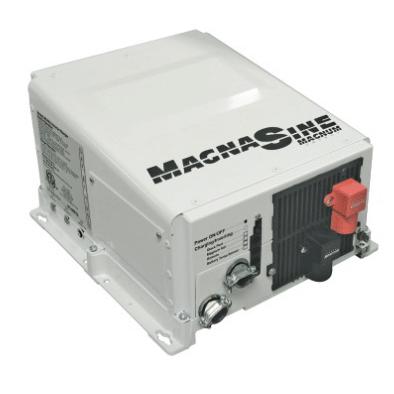 Inverters when installed correctly will
provide endless years of energy conversion providing the needed AC
power for your appliances and electronics.
Inverters when installed correctly will
provide endless years of energy conversion providing the needed AC
power for your appliances and electronics.
Here are 3 of the biggest mistakes typically made during
inverter installation:
1) WIRE SIZE - The DC connecting
wires from the inverter to the battery bank. It is always best to get
the inverter as close to the battery bank as possible (min distance),
which may not always be practical. Most inverters have 100% overload
capacity therefore when sizing the inverter always figure on 2X the
inverters full load DC current when sizing the wire (2% drop or
less). Not sure which wire size to use? Talk to a technical expert
to get the best advice on this one, it’s worth the time and wise to
invest in the correct cable up front before installing. More
information is also available at our Wire and Cable Section
Wrong wire size typically results in inverter nuisance shutdown
when high demand loads are trying to operate (such as refrigerators,
freezers, ice makers, microwaves, water makers, etc.) This
connection must always have circuit protection (fuse or circuit
breaker)!
2) LOCATION - Location can be life or
death of the inverter. Make sure the compartment has plenty of clean
air, is large enough for air circulation and not exposed bad elements
like: salt water (like a wet locker); excessive heat (like an engine
compartment) or corrosive elements (non-sealed flooded batteries
gassing). Only certain manufacturers inverters can handle harsh
environments (typically sealed) but they do come at a higher cost.
Investment in this type of inverter will pay off in the long run when
the right compartment space is unavailable. Always check the
manufacturer’s manual or ask a knowledgeable source to gain advice.
3) MOUNTING - Mounting the inverter
abnormally (other than vertical) may be necessary due typically to
available space (not an unusual problem). Mounting them in creative
places such as: the ceiling of the compartment; in a horizontal
position; on a high vibration surface: or next to a large heat
producing source will affect the inverter life. Always refer to the
manufacturers recommendation as many inverters cannot be mounted in
any of these positions while only a few can.
Consider and avoid the previous mistakes when installing an inverter. Please do not hesitate to contact us if you need assistance installing or need inverter repair services.